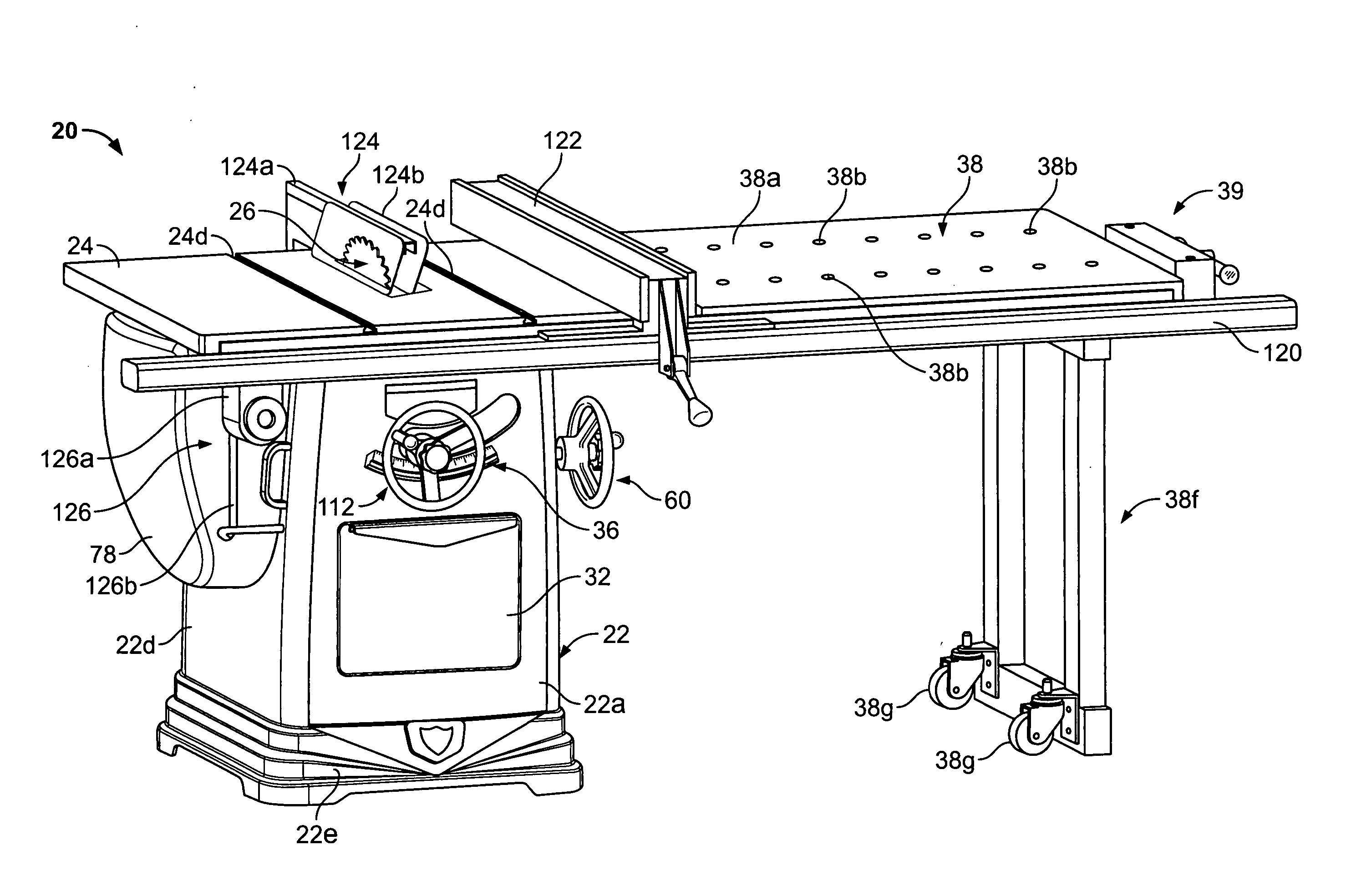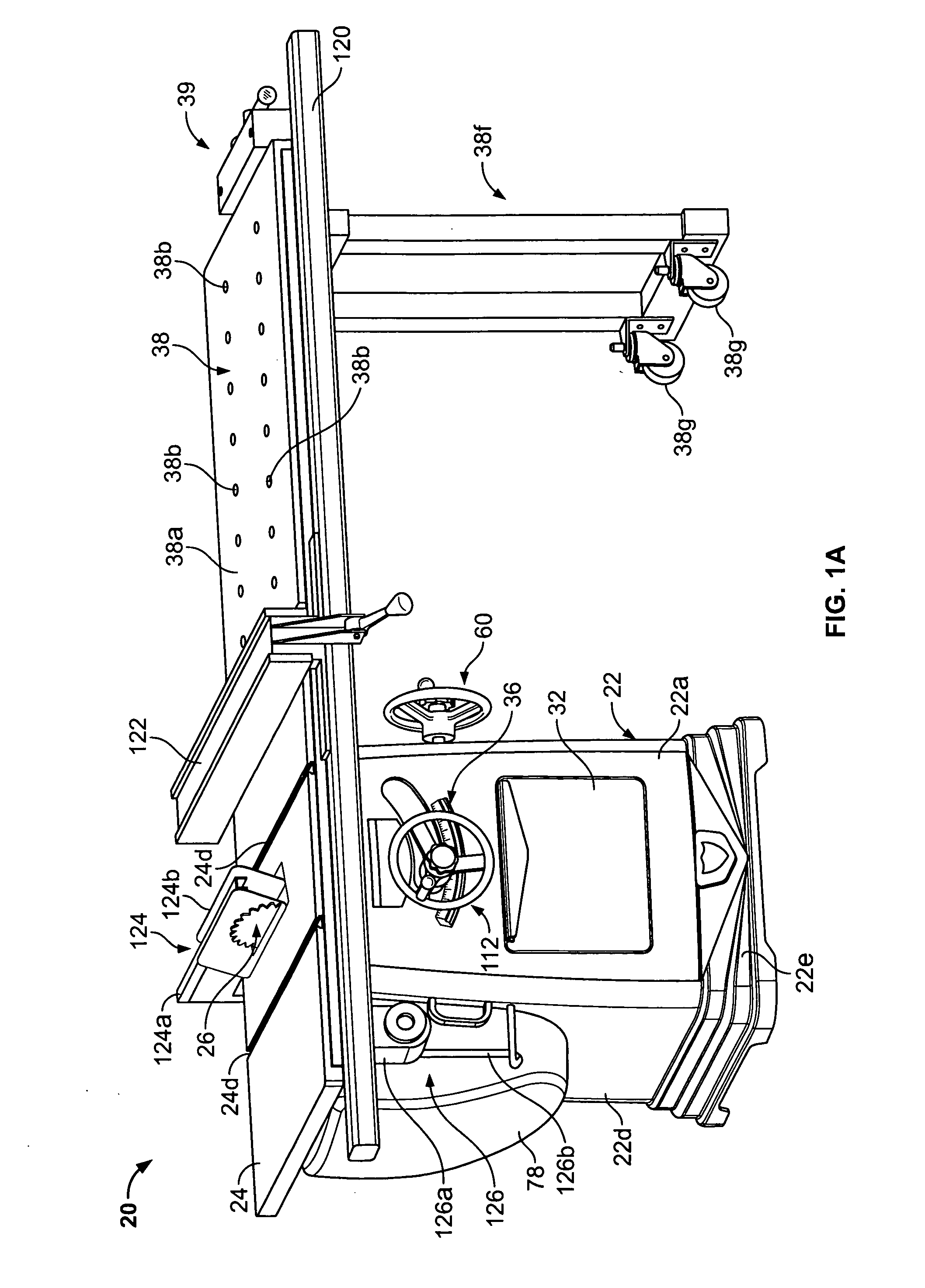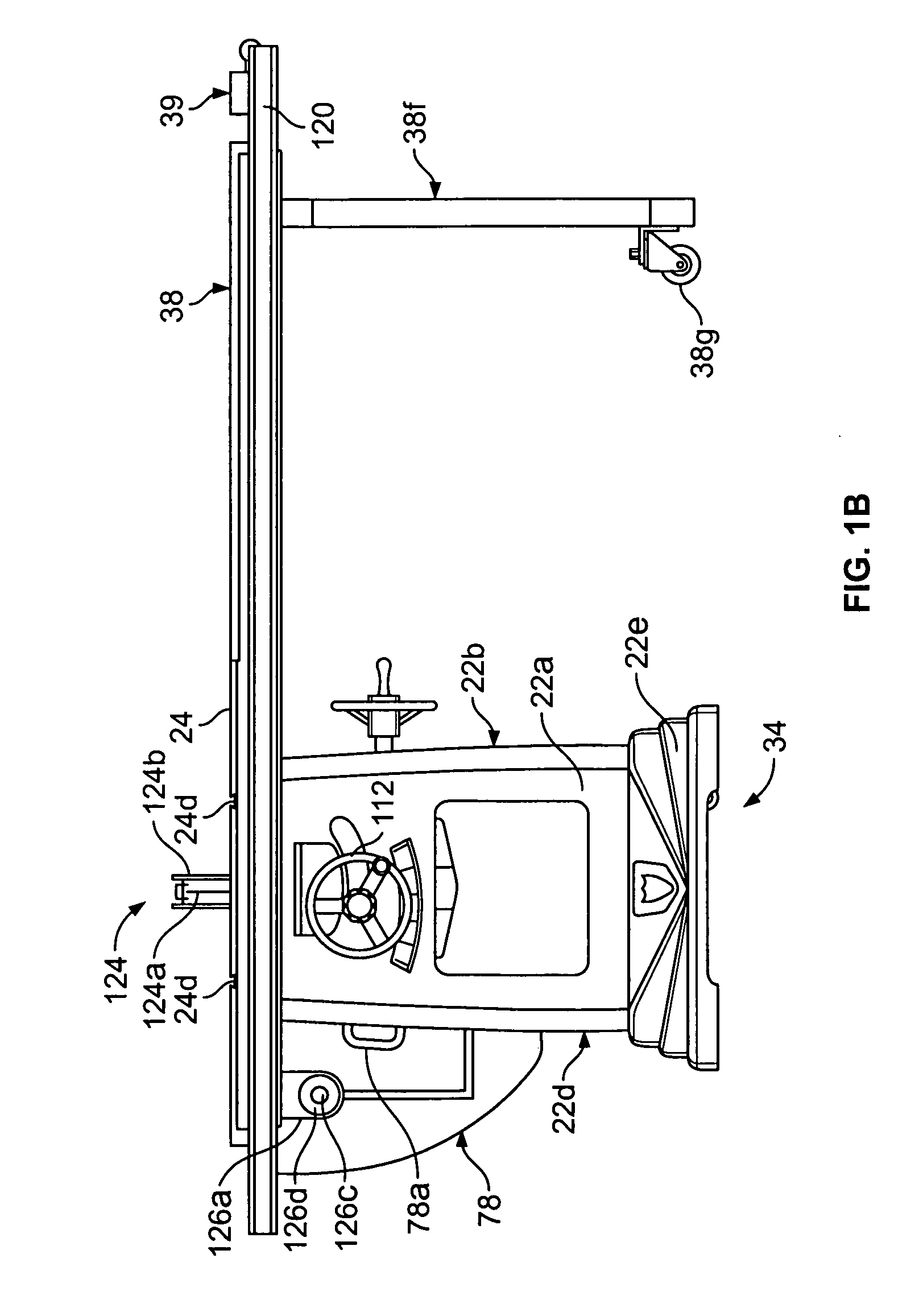Cutting tool and parts and accessories therefor
a cutting tool and cutting blade technology, applied in the field of cutting tools, can solve the problems of difficult to focus, difficult to remove and replace the saw blade, and the tool is not designed to allow easy attachment, removal and replacement of the saw blade,
- Summary
- Abstract
- Description
- Claims
- Application Information
AI Technical Summary
Problems solved by technology
Method used
Image
Examples
Embodiment Construction
[0042] Turning now to the drawings, in which FIGS. 1A-F illustrate a cutting tool 20 in accordance with the invention, the cutting tool 20 includes a housing 22 with a generally flat work surface, such as table 24, upon which workpieces, such as wood or metal, may be set or rested. The table 24 defines an opening 24a through which a cutting implement, such as saw blade 26, may be disposed. In addition to the conventional components of a cutting tool, cutting tool 20 may also include an arbor lock 28 (FIGS. 7A-E), located within housing 22, for preventing the arbor 30 from rotating to assist an operator in installing, removing or replacing the saw blade 26. The cutting tool 20, may also include an internal storage compartment 32 for storing items or equipment, including those for use in connection with the cutting tool 20, an internal mobility system 34 to assist the operator in moving the cutting tool 20 when desired, and a cutting implement angle memory indicator 36 for aiding the ...
PUM
| Property | Measurement | Unit |
|---|---|---|
| Angle | aaaaa | aaaaa |
Abstract
Description
Claims
Application Information
 Login to View More
Login to View More - Generate Ideas
- Intellectual Property
- Life Sciences
- Materials
- Tech Scout
- Unparalleled Data Quality
- Higher Quality Content
- 60% Fewer Hallucinations
Browse by: Latest US Patents, China's latest patents, Technical Efficacy Thesaurus, Application Domain, Technology Topic, Popular Technical Reports.
© 2025 PatSnap. All rights reserved.Legal|Privacy policy|Modern Slavery Act Transparency Statement|Sitemap|About US| Contact US: help@patsnap.com



